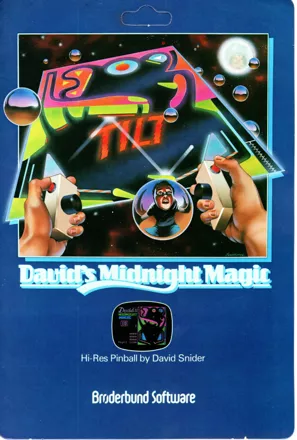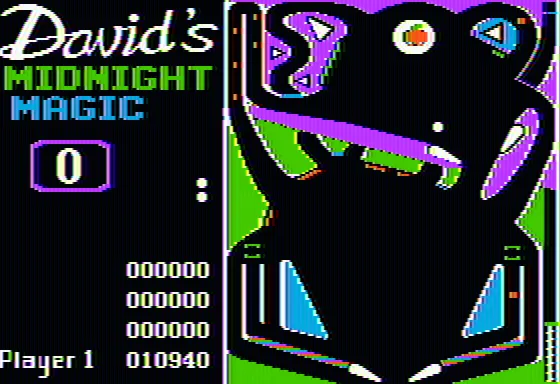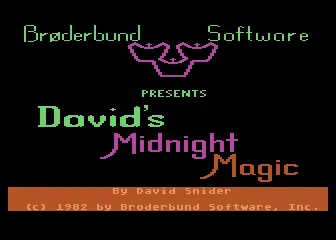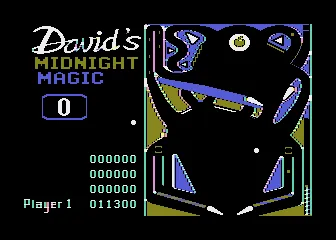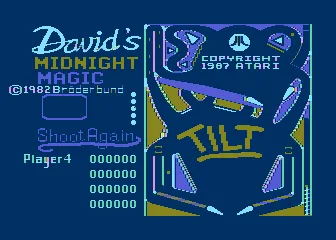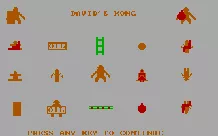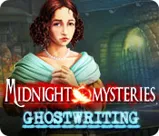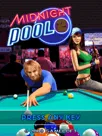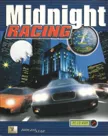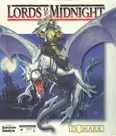David's Midnight Magic
Description official descriptions
David's Midnight Magic is a simple pinball game designed for 1-4 players. The game was modeled on the popular Black Knight pinball table released by Williams. Unlike Black Knight, however, David's Midnight Magic contains a mixture of bright colors. Featuring dual flipper controls, upper and lower playing fields, tilt mechanism, multiple ball play, electromagnetic deflectors, and many special effects, the game represents the first generation of home computer pinball simulations available with relatively realistic pinball features.
Screenshots
Promos
Credits (Apple II version)
| Programmer | |
| Cover Artwork |
|
Reviews
Critics
Average score: 71% (based on 11 ratings)
Players
Average score: 3.7 out of 5 (based on 24 ratings with 1 reviews)
One of the earliest pinball games available for home computers
The Good
When people think of pinball games on a home computer, they usually think of the ones released by 21st Century Entertainment in the Nineties. They were a great way not to go down to the arcade and insert quarters into one of the pinball machines available at the time. The home computer pinball game actually dates back to the Eighties, when Bill Budge created Raster Blaster, which paved the way for more accurate pinball sims to follow. It was only released for the Apple II, so anybody who didn't own an Apple couldn't experience what pinball on a computer was like. That all changed when Brøderbund released David's Midnight Magic for various other platforms.
The game share the same mechanics as the many other pinball games you find in the arcades at the time, including multiball and score multipliers. The advantage over these pinball games is that you only have to press one key to start the game. You also get five balls instead of three, the game supports up to four players, and there are a few other surprises.
The table itself is colorful and laid out nicely, and the animations are also neat. I like the bumper with the red apple on it, which is a homage to the original version of the game. The game displays some graphical trickery alerting the player that a certain feature has been activated. The flashing of the title above the scoreboard indicates that the player has launched multiball. Likewise, if the player tilts the table one too many times, the table will be locked and the word TILT in big, red letters.
The sound effects are basic and there is no background music distracting you from the action. There is a high score table, listing the top ten, and this high score table can be used to “score-attack”. I like how the keys are laid out nicely. The [Shift] key is used to move the right flipper, and the [Commodore] key is used to move the right.
The Bad
Nothing. It's just a basic pinball game.
The Bottom Line
In closing, David's Midnight Magic is a pinball game featuring mechanics that mimics those found in the arcades at the time. The only difference is that there is no quarters involved. The table itself is quite colorful and laid out nicely. It is easy to get used to the game's controls since they are spread across the keyboard. If you want a break from arcade games or shoot-em-ups, you can load up DMM and have a few goes.
Commodore 64 · by Katakis | カタキス (43085) · 2015
Trivia
Cover art
In 1982 when Marc Ericksen was commissioned by the Carlston family to illustrate the David's Midnight Magic package art cover, the original concept sketch he drew showed that player's face reflected in the foreground on the floating chrome pinball. This was accepted, and that's how the game art was painted. When the game was adopted for Atari, they directed that the face be removed, on the grounds that it might have restricted a broader buying audience. Marc was paid to retouch out the face on the painting. All other iterations of the packaging followed suit, leaving the original Commodore 64 box as the only one showing the reflected face scene.
Analytics
Identifiers +
Contribute
Are you familiar with this game? Help document and preserve this entry in video game history! If your contribution is approved, you will earn points and be credited as a contributor.
Contributors to this Entry
Game added by Katakis | カタキス.
PC-98, Atari 8-bit added by Kabushi. PC-6001 added by vermilion1. PC-88 added by Terok Nor. Atari 2600 added by LepricahnsGold.
Additional contributors: LepricahnsGold, Marker.
Game added September 11, 2005. Last modified May 10, 2024.


